#The Electrum Archive
Text

Gemhaven, for The Electrum Archive issue 02
#rpg#osr#dnd#ttrpg#indierpg#weird fantasy#morrowind#zine#dark sun#the electrum archive#fantasy art#fantasy
201 notes
·
View notes
Text
1d8 "Free" Fantasy RPGs To Replace 5e At Your Table
D&D 5e sure is a roleplaying game, and it's one that I have enjoyed a lot. However, that doesn't mean that I'd recommend it automatically for other people. This has many reasons, which I won't elaborate here. It has also shaped the perception of TTRPGs significantly thanks to its market dominance, and not in a good way.
5e has a reputation for being an expensive, complex game, and 5e players fear that other RPGs might just be the same. That it's too much of a hassle and too much of a financial burden to switch systems.
So, to help 5e players pick out a different system, I've made this handy 1d8 rolling table to help them pick a fantasy TTRPG with a combat component that they can try instead!

Let's now go through these eight nine RPGs and see what's up with them, right below the "Keep reading" section!
I'll be listing some metrics like the page count for the rulebook(s), the core resolution mechanic, how complex the game is in terms of character creation & combat, and how well-supported the game is by their publisher and the community-at-large.
1. Cairn
Author: Yochai Gal
Release Year: 2020
Cost: Free PDF, printed copies cost between $3 to $10 depending on the print quality.
Page Count: 24
Website: https://cairnrpg.com/
Resolution Mechanic: 1d20 Roll Under system for ability checks/saving throws, attacks hit automatically, "fiction-first".
Action Economy: Movement + one action per round.
Characters: Random character creation, class-less and level-less, advancement based on "Scars" (suffering damage that reduces your HP exactly to 0)
Setting: Implied. Low-magic European-style fantasy; mysterious woodlands.
Other Noteworthy Mechanics: Hit Protection and Ability damage instead of HP, Slot-Based Inventory.
Degree of Support: Very high. Available in fifteen languages (e.g. Spanish, Russian, Chinese, and German); full rules text is under CC-BY-SA 4.0; multiple published third-party adventures & supplements available; some official bonus material (e.g. bestiary, magic items/relics, and spells) is available for free on the website.
Addendum: An expanded 2nd Edition is currently on Kickstarter (ends April 26th 2024); Cairn is legitimately easy to learn, however the Hit Protection system and the connected Scars system is a very different abstraction to health and advancement compared to 5e.
2. Cloud Empress
Author: worlds by watt
Release Year: 2023
Cost: Free PDF of the rulebook and the creator-written sample adventure "Last Voyage of the Bean Barge", $20 for the print edition of the rulebook, $12 for PDF supplements, $25 for print + PDF supplements; free solo rules also available as PDF only.
Page Count: 60
Website: https://cloudempress.com/
Resolution Mechanic: d100 Roll Under system for stat checks/saving throws, critical successes or failures on doubles (11, 22, 33, etc.), 5e-style advantage/disadvantage, attacks generally hit automatically.
Action Economy: Two actions per round with no free movement.
Characters: Semi-random character creation, four classes ("jobs"), no rules for character advancement in the ruleset.
Setting: Specific. "Ecological science fantasy" heavily inspired by Hayao Miyazaki's "Nausicaä of the Valley of the Wind"; costly magic, giant insects, dangerous mushrooms; only human player characters.
Other Noteworthy Mechanics: Damage points culminate in Wounds; Wounds and Stress as ways to track your character's physical and mental state; slot-based inventory system.
Degree of Support: Low-ish. Several official supplements exist, however third-party material is very sparse. May improve due to the recent establishment of a Cloud Empress Creators Fund, has a simple 3rd party license system.
Addendum: A supplement, "Cloud Empress: Life & Death" is currently on Kickstarter (ends April 26th 2024, yes, the same day as Cairn 2e) and as a disclaimer I even backed that current Kickstarter; Cloud Empress is built on the engine of the sci-fi horror RPG "Mothership"; clearly built for one-shots and short campaigns; has a wonderful resting system that encourages roleplay between players.
3. Iron Halberd
Author: level2janitor
Release Year: 2023
Cost: Free PDF of the rules; no print option available.
Page Count: 60
Website: https://level2janitor.itch.io/iron-halberd
Resolution Mechanic: 1d20 + Bonus Roll Over system against difficulty or armor rating, however most non-combat-related actions follow a fiction first approach without dice rolls.
Action Economy: Movement + one action per round.
Characters: Semi-random character creation, class-less but there are four different "gear kits" that nudge your character towards certain archetypes, levelling up with XP.
Setting: Essentially non-existant. General European fantasy with magic, gods may or may not exist/shape the world, various fantastic ancestries included.
Other Noteworthy Mechanics: Includes rules for building strongholds and maintaining warbands; slot-based inventory with a durability mechanic.
Degree of Support: None. The game is intended to be relatively compatible with other OSR content and the creator suggests using adventures made for the D&D retroclone Old-School Essentials if you wanna use pre-published ones. An official introductory adventure, "Sea-Spray Bay", is apparently in the works. No 3rd party license available, as far as I know.
Addendum: One thing about Iron Halberd I like especially is how it uses random tables for generating equipment. Most of the equipment is listed in a numerical order by category, and the various gear kits include references on different rolling formulas for those equipment categories. For example someone taking the "soldier's kit" rolls twice on the d20 Weapons table and takes their preferred pick, while someone taking the "sage's kit" only rolls a d4 on that table.
4. Mausritter
Author: Isaac Williams
Release Year: 2020
Cost: Free PDF of the ruleset available; box set with the rules and several goodies including an adventure costs $55; additional box set + PDFs containing eleven official adventures costs $55 (or $20 digital-only).
Page Count: 48
Website: https://mausritter.com/
Resolution Mechanic: 1d20 Roll Under system, 5e-style advantage/disadvantage, attacks always hit.
Action Economy: Movement + one action per round.
Characters: Random character creation, class-less, levelling up with XP.
Setting: Vaguely specific. You play as mice and everything is related to mouse-size; cats are the equivalents of devils or dragons; humans exist as a setting background but may or may not be present in a campaign.
Other Noteworthy Mechanics: Includes rules for recruiting warbands; slot-based inventory with a durability mechanic.
Degree of Support: Very high. Several official supplements exist, as well as loads of content, be it adventures or supplements, made by other creators. Available in seven languages (all of them however are European). Has a simple 3rd party license system.
Addendum: Mausritter uses the phrase "adventure site" instead of dungeons. On the website a free adventure site generator is available, as is a digital tool that can be used to generate your own item cards for the slot-based inventory system.
5. Maze Rats
Author: Ben Milton
Release Year: 2017
Cost: $4.99 for the PDF, no print option regularly available.
Page Count: 32
Website: https://questingbeast.substack.com/
Resolution Mechanic: 2d6 + Bonus Roll Over system; advantage system that uses 3d6 drop the lowest + Bonus.
Action Economy: Movement + one action per round.
Characters: Semi-random character creation, class-less but instead there are character features (e.g. spell slots or attack bonuses), levelling up with XP.
Setting: Essentially non-existant. Magic is very irregular (s. the section below), but otherwise it implies a vaguely European fantasy setting.
Other Noteworthy Mechanics: Spells are randomly generated each adventuring day and spell effects are negotiated between the GM and the spellcasting player; includes several fantastic d66 tables that can be used to randomly generate worlds.
Degree of Support: Decent. The rule text is licensed under CC BY 4.0 and unofficial translations are available. Some third-party content has been made specifically for the game.
Addendum: The only purchase-only game on this list. However "unofficial" distribution of the PDF is very common. Also this is the oldest game on the list. Ben "Questing Beast" Milton is a prolific OSR blogger and runs a YouTube channel on the OSR. Great dude.
6. Sherwood - A Game of Outlaws & Arcana
Author: Richard Ruane
Release Year: 2022
Cost: Free quickstart PDF titled "Sherwood - A Quickstart of Outlaws" available; digital rulebook costs $7.50 and the print edition (including PDF) costs $15.
Page Count: 25 (Quickstart), 32 (Rulebook)
Website: https://www.r-rook.studio/
Resolution Mechanic: 2d6 + Bonus Roll Over system for skill checks (including attacks), 2d6 Roll Under system for saving throws; advantage & disadvantage system that involves rolling 3d6 and using the higher/lower of the two results; almost all rolls are player-facing
Action Economy: "Conversational", assumption of movement + action.
Characters: Largely choice-based character creation. Combine two (of six) background abilities with the benefits of seven different careers. Big focus on interpersonal relationships during character creation. Limited character advancement takes place during downtime.
Setting: Specific. Takes place in a fantastical version of 13th century England, with fey and magic coexisting with outlaws and crusaders.
Other Noteworthy Mechanics: The group of outlaws possesses two shared resources (Resources and Legend) that can be spent to gain certain benefits; spellcasting is divided into two categories: arcane talents and sorcerous rites, with the former being immediate and the later taking significant time; slot-based inventory.
Degree of Support: None. No further publications exist for the game and while it is published under the CC-BY 4.0 license, no third-party content exists as far as I know. It does include a guide on how to convert D&D and Troika (N)PCs into Sherwood characters, as well as three adventure seeds (one in the Quickstart, two in the rules), which is at least something.
Addendum: Might just be the game on this list that encourages the most roleplaying; the character sheet is sadly very provisional-feeling and the Quickstart feels outdated compared to the finalized rulebook.
7. The Electrum Archive
Author: Emiel Boven
Release Year: 2022
Cost: Free Rules PDF available, zines cost $12 as digital PDFs or $24 as print + PDF combos; the first zine contains the entire contents of the Free Rules PDF
Page Count: 26 (Free Rules), 72 (Issue 01)
Website: https://www.electrumarchive.com/
Resolution Mechanic: 1d10 Roll Under system, attacks always hit.
Action Economy: Movement + one action per round.
Characters: Largely choice-based; three archetypes roughly corresponding to fighters/rangers (Vagabonds), rogues (Fixers), and spellcasters (Warlocks); player characters are presumed to be human; levelling up with XP.
Setting: Specific. Mechanics heavily tie into the lore; humanity has abundant access to minerals but requires a rare substance known as Ink to operate certain pieces of tech (like guns) and cast spells but cannot produce Ink themselves; spirits of various sorts can be foes, targets of worship, or sources of power.
Other Noteworthy Mechanics: Uses a spellcasting system for the Warlock archetype that's heavily based on the one used in Maze Rats, as in it uses randomly-generated spells whose effects are negotiated between the player and the GM; slot-based inventory with a durability mechanic.
Degree of Support: Minimal. The game consists out of the free rules and (soon) two zines; a third party license exists but content produced under it is very rare.
Addendum: I need to disclaim that I recently backed the Kickstarter campaign for the second zine for this game; the free rules feature wrong page numbers in its table of contents which is unfortunate; The Electrum Archive uses incredibly simple stats for NPCs which makes creating new ones based on other games rather simple.
8. Shadowdark RPG
Author: Kelsey Dionne
Release Year: 2023
Cost: Free player and game master quickstarts exist as PDFs and are available in print for $19, the core rules cost $28 in PDF form and $57 in a print + PDF bundle
Page Count: 68 (Player Quickstart Guide), 68 (Game Master Quickstart Guide), 332 (Core Rules)
Website: https://www.thearcanelibrary.com/
Resolution Mechanic: 1d20 + Bonus Roll Over system, 5e-style advantage/disadvantage, natural 1s are critical failures and natural 20s are critical successes.
Action Economy: Movement + one action per round.
Characters: Largely choice-based; players have a fantasy ancestry and a class; levelling up with XP; class progression largely random.
Setting: Vague. General (dark) western fantasy conventions apply; alignment is a force in this universe and a sample pantheon is provided; the most potent enemies in the rules are named individuals that fit classic TTRPG monster types; illustrations and lore snippets have recurring motifs.
Other Noteworthy Mechanics: The key mechanic of Shadowdark is how the game handles light, namely that light sources are tracked in real time (i.e. a normal torch lasts 1 hour), which increases tension; slot-based inventory; has a 0th-level character creation option using an eliminationist "Gauntlet".
Degree of Support: Fantastic. Several official supplements and offically sanctioned digital tools exist; lots of third-party content available under a generous third-party license.
Addendum: Definitely the most similar game to 5e on this list besides the next entry; very robust mechanically and the Core Rules features extensive lists of magic items, monsters, and spells; also for early play giving your players only access to the quickstart is a totally valid choice; and finally, before Dionne made Shadowdark, she made 5e adventures for years and it shows (affectionate).
9. Pathfinder
Authors: Logan Bonner, Jason Bulmahn, Stephen Radney-MacFarland, Mark Seifter
Release Year: 2019 (initial release), 2023 (remaster)
Cost: Free and comprehensive SRD available via the platform Archives of Nethys, free "Pathfinder Primer" abridged rulebook available via the Pathfinder Nexus (powered by Demiplane), Core books are priced $20 for PDFs and $30/$60 for print as a softcover/hardcover; a Beginner Box set with shortened soft-cover rules costs $45
Page Count: 464 (Player Core), 336 (GM Core), 376 (Monster Core), 160 (Combined Beginner Box Softcovers)
Website: https://paizo.com/pathfinder
Resolution Mechanic: 1d20 + Bonus Roll Over system, 5e-style advantage/disadvantage, four degrees of success based on result compared to target number.
Action Economy: Three action points per round; various actions may require more than one point; every character can use one reaction per round of combat.
Characters: Choice-based; players first pick an ancestry and a background and a class (the ABCs) and then tend to have meaningful choices after each level-up; levelling up with XP.
Setting: Important. Golarion, the game's setting, is a world that has been long in development and it shows; powerful magic and influential gods; very clear notions of what the societies of the various peoples of the world are like and how they should behave.
Other Noteworthy Mechanics: Balance between character classes and reliable combat challenge calculations are an important design goal; weight-based inventory system; archetype system for "multiclassing".
Degree of Support: Fantastic. Loads of content gets regularly produced by the game's publisher Paizo; the Pathfinder Infinite program (similar to D&D's Dungeon Master's Guild) provides lots of lore-compliant third-party content; uses the ORC third-party license for content produced outside of the Pathfinder Infinite program. Translations into other languages available but Paizo does not provide a comprehensive list of available languages (only German and French confirmed after brief personal research).
Addendum: The most popular and commercially successful of the listed games; but also by far the most complicated, though it is easier to GM for specificallty than 5e; also I dislike how certain feats create situations where fairly mundane actions get mechanics through these feats instead of being things you can generally do; anyway the reason why it's a 9 on a 1d8 table is because if you wanted to try out Pathfinder 2e you already would have and because while Paizo is better than WotC it's still a flawed big company.
...
So this was an exhausting little project. I hope you found this helpful and I hope you give at least one of these games a shot! A follow-up to this post is not out of the cards, but I don't plan on one.
Before we go, have this poll about which of these systems you're most looking forward to try! Shame it can only be open for one week...
#thehomelybrewster#dnd 5e#dnd#indie ttrpg#tabletop roleplaying#ttrpg community#Cairn#Cloud Empress#Iron Halberd#Mausritter#Maze Rats#Dungeons and Dragons#Sherwood#The Electrum Archive#shadowdark#pathfinder
38 notes
·
View notes
Text
The Electrum Archive is a tabletop RPG in which warlocks inhale vaporized ink to cast spells and peer into the Realm Beyond.
It has one of the coolest settings I've ever read in an RPG!
Also, issue 2 is crowdfunding now, which has the option to add issue 1 to your pledge.

339 notes
·
View notes
Text
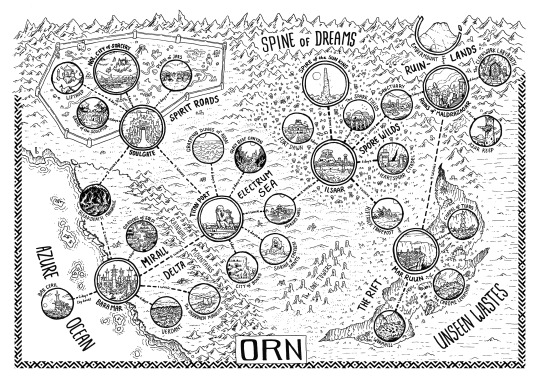
Map of Orn from the RPG The Electrum Archive by Emiel Boven.
3 notes
·
View notes
Text
The Electrum Archive - Free Rules by Emiel Boven
0 notes
Text
Gonna spend the evening trying out a The Electrum Archive-inspired spell generation system... 132 words spread evenly across three categories, with four different ways to combine said categories.
#nils talking#game design#the electrum archive#it's pretty much that game's system with some adjustments#including a healthy dose of the Dragon Age magic system
0 notes
Text
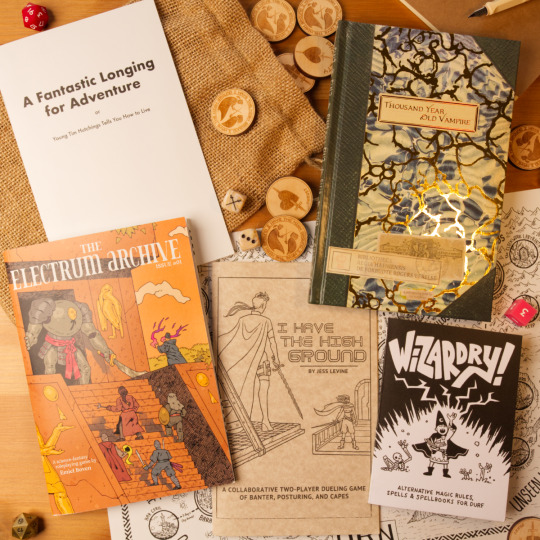
New games are just in!
#indie ttrpg#bookstore#ttrpg#durf#journaling game#electrum archive#indie games#ttrpg art#zine#zine games
5 notes
·
View notes
Note
What all roleplaying games have you worked on?
I'll try to name them all here but there are a lot and some of them are pretty small so I may miss a few by accident.
Epochrypha (2018) by Skerples was both the first piece of paid work I did and also the first game supplement I worked on. This is so old I was still inking digitally.
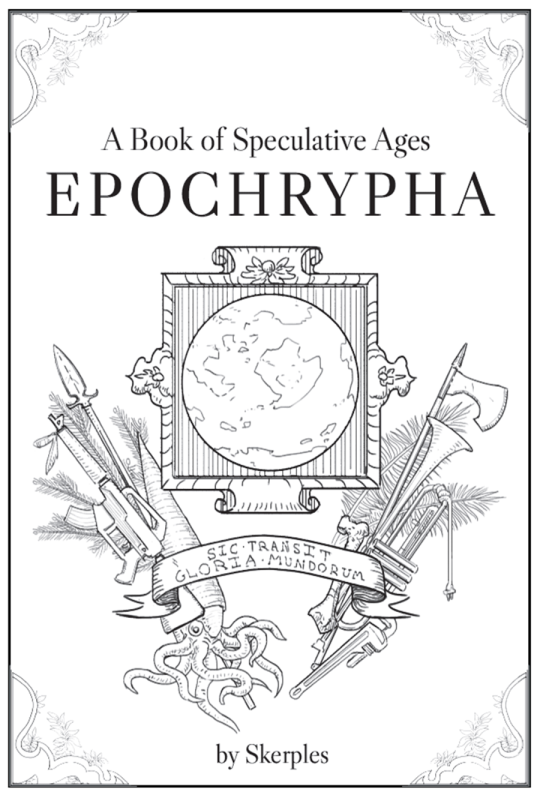
I also provided illustrations for Magical Industrial Revolution and The Monster Overhaul by the same author.


Monster Overhaul was neat because I did interior illustrations in early 2020 but didn't do the cover until 2022 so you can see quite a stylistic evolution.
From 2018 to 2020 things were pretty quiet for me until I worked on The Shifting City by Dank Dungeons. People really liked the cover for some reason and that basically created a career for me. I still get people asking me to basically recreate this cover a few times a year:
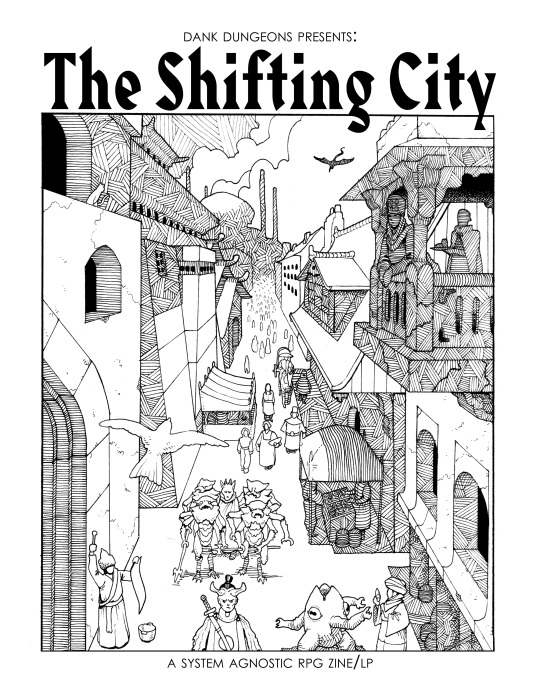
I did a handful of illustrations from 2020 to 2022ish for Ukuwa Station that ended up in The Field Guide to Mfecane, a third party afrofuturist Lancer expansion.
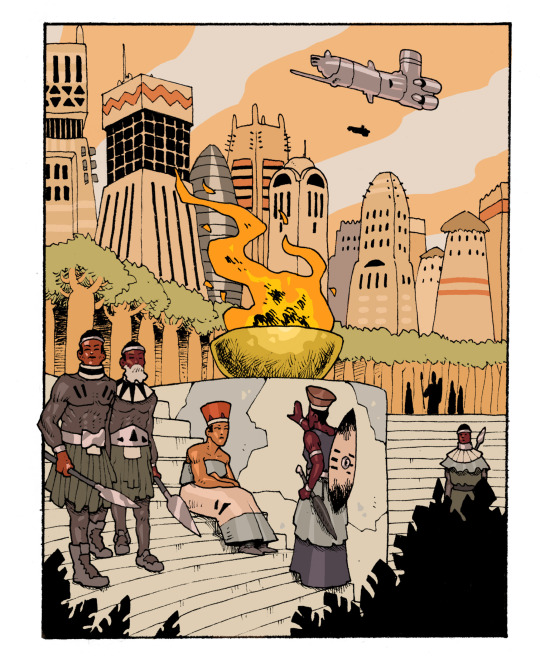

Our Vale of Discontent was a small game I worked on in 2020:
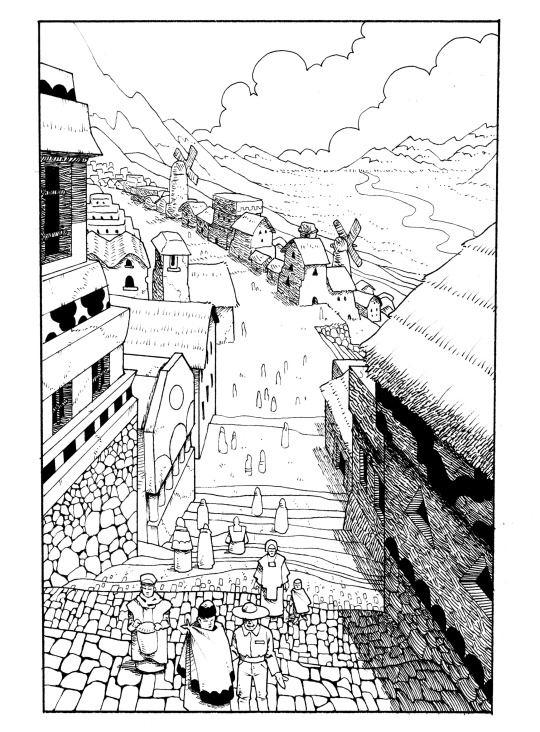
Mycosis is a Mork Borg dungeon I worked on around this time, which notably marked my first attempt at doing some goofy black metal title font.


I did most of my illustration work for Desert Moon of Karth by Joel Hines in late 2020 and early 2021:
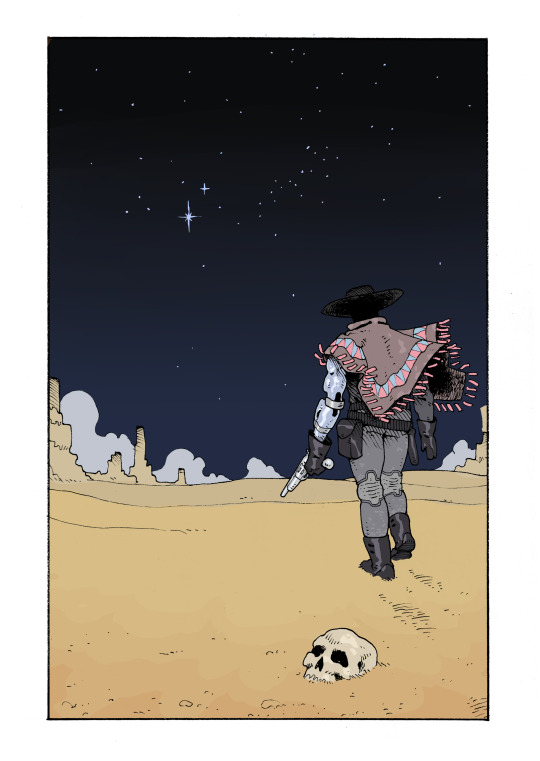

The sequel, Tide World of Mani is still being worked on. I just finished my last interior illustrations for it a month or two ago.
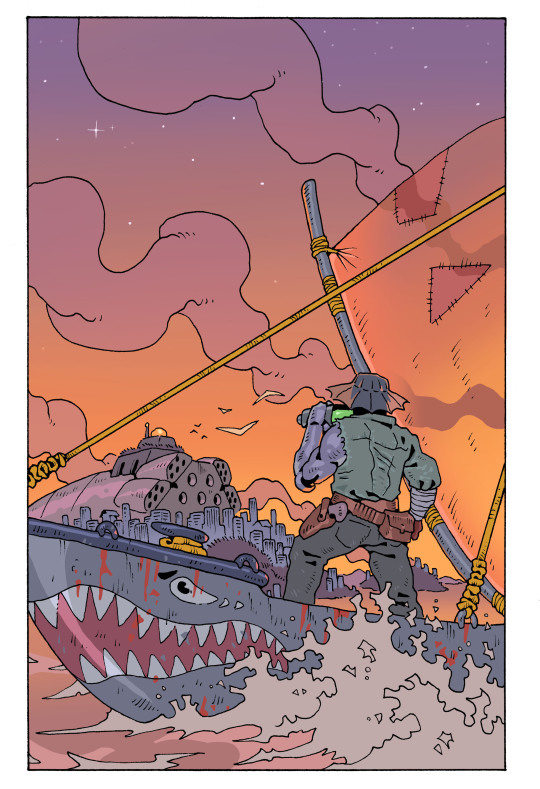
AZAG by Dank Dungeons was a game I worked on throughout 2021 that was a blast and I think more people should know about.
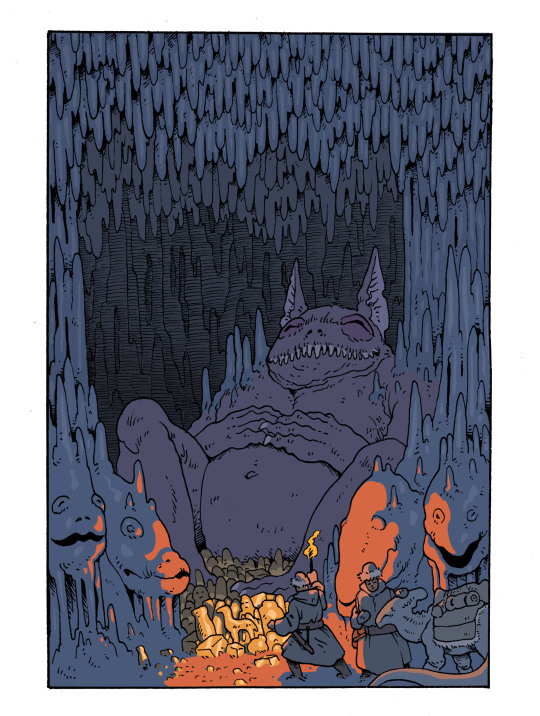

At some point in 2021 I did a bunch of pieces for Lore & Legacy although I don't remember exactly when. These never got posted but the book's been out for a while now so maybe I'll show them off later.

Late in 2021 was when I started doing illustrations for The Electrum Archive by Emiel Boven (I think issue 2 is out soon).

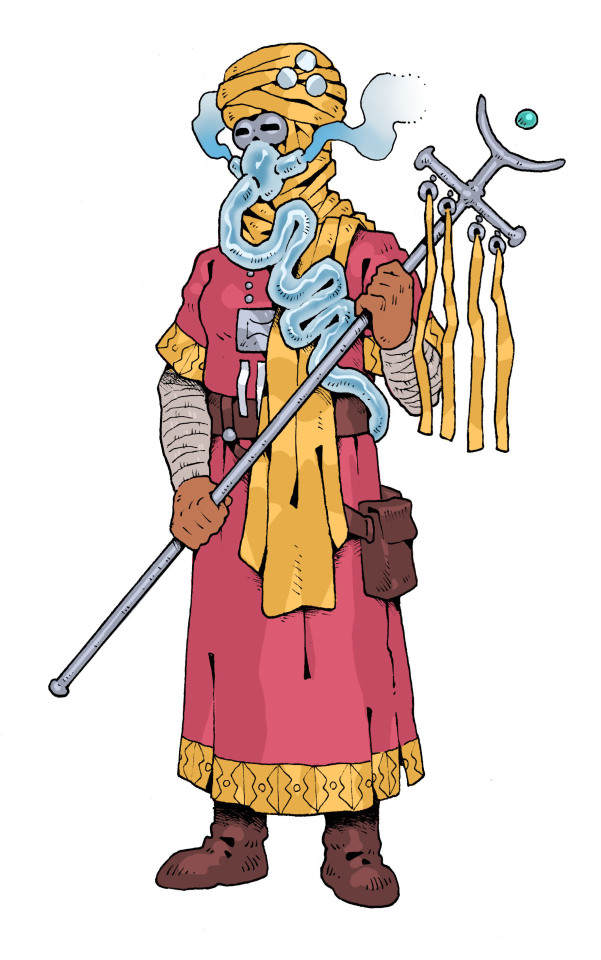
Early 2022 I did a bunch of character illustrations for some Victorian horror fantasy game that I don't think ever actually came out (commissioner never responded to me when I asked about it at least) which is a shame because I'm proud of these. At least I got paid!


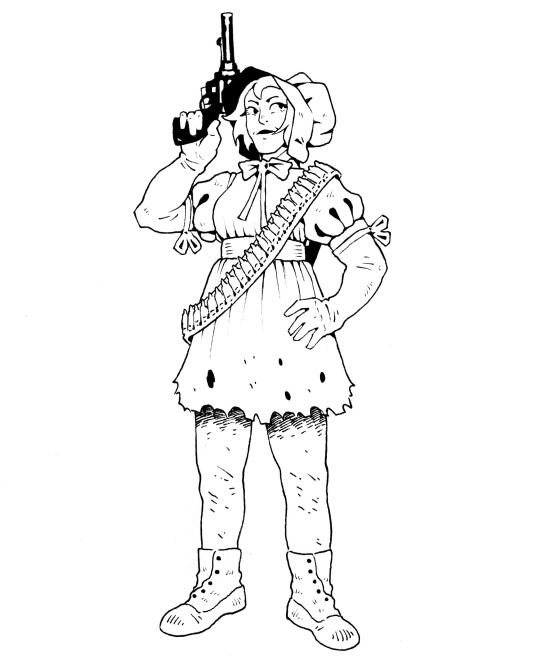

This was another one for a game that I don't think ever came out:
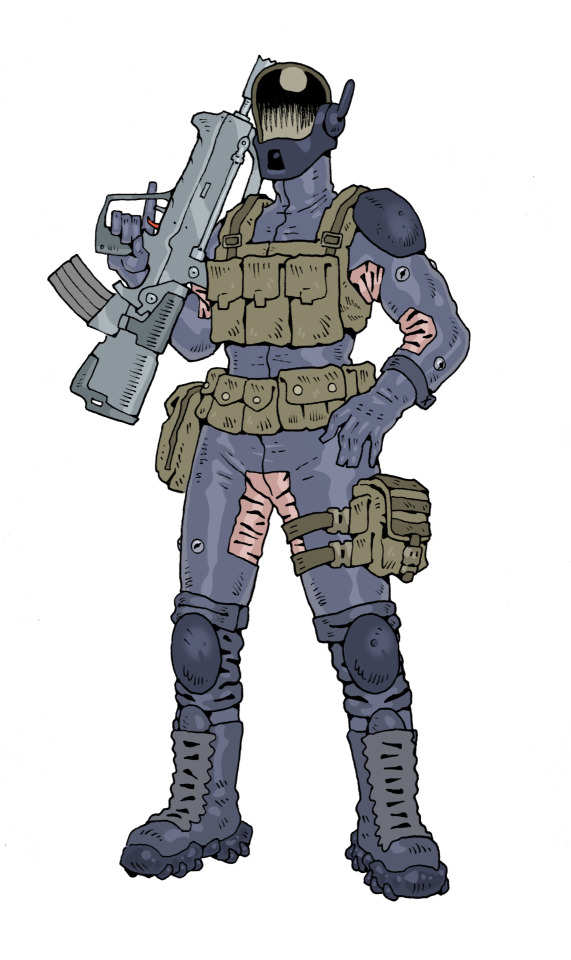
I did character designs for Nebula Chaos by Polyhedra Games in 2022:


Then Neon Saber by Olivia Miller
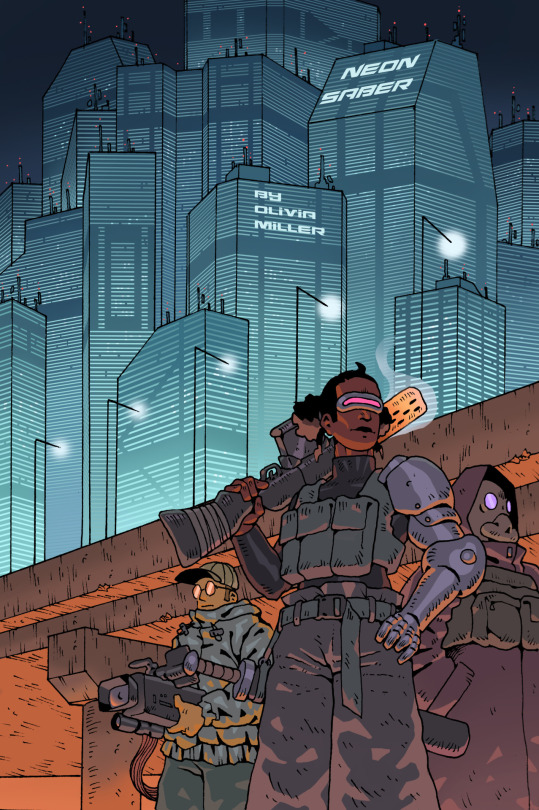
Then some pieces for If Worlds Collide:
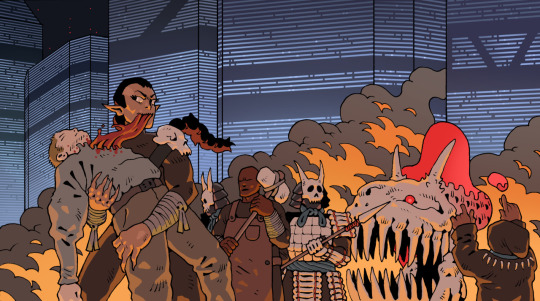
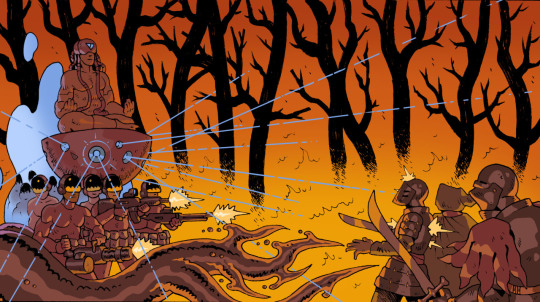

Then Critters & Companions by Pearse Anderson:

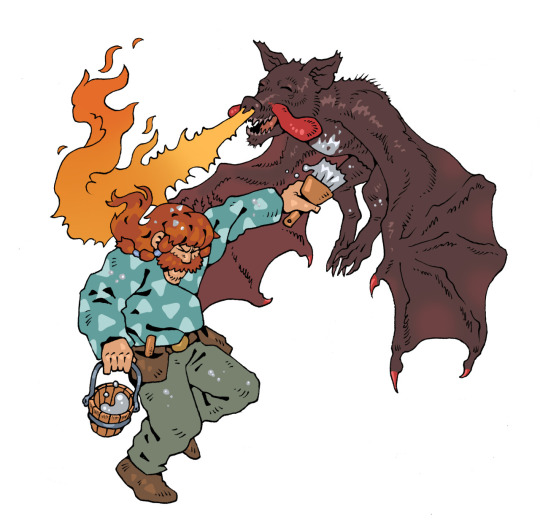
Ran out of space for images, I'll finish this in part 2...
481 notes
·
View notes
Text
mistborn (eras 1 and 2) spoilers under the cut, also a tiny bit of stormlight archive, and a mention of yumi and the nightmare painter
how did Harmony make Spook into a mistborn? did he create some lerasium and somehow force Spook to burn it? can Harmony create lerasium and atium, and if so, why does he not? how did Harmony make the metals that Wayne burned at the end of era 2 to become a mistborn?
if there was such a thing as an atium misting, and it wasn't a hemalurgic spike, how does that work? atium was retconned to be an alloy of atium and electrum (i believe), so does that mean that that one obligator could also burn electrum? could a coinshot burn an atium/steel (it might be iron but I'm pretty sure it's steel) alloy? or are there mistings for each individual god metal alloy? i haven't done the math, but that's A Lot of alloys, and that's not even considering what mixing two god metals together would do. and that's not even getting into harmonium.
why could ruin and preservation mentally speak to people and read people's minds, respectively? why could they only do that if they had a hemalurgic spike? kelsier found out that that had something to do with mental illness, is that how the spren bonds work? (speaking of those, and i am not qualified in the slightest to talk about this, how does DID work in the cosmere, where everyone (everything???) has a distinct soul?) why can't shards on roshar, like odium, do this? or can they? how does hemalurgy manage to literally transform people from, well, people, into kandra or inquisitors or koloss?
if the mistwraiths can be turned into kandra with hemalurgic spikes, can humans be turned into kandra also? we know they can be, but how? rashek gained that knowledge during his short time at the well of ascension, which has its own set of questions
why does the power there replenish every 1024 years? why does preservation tell kelsier that 16 is such an important number, when roshar only has 10 surges, and some other planets have other numbers of magic things? why does shadesmar around roshar look different than shadesmar around scadrial? (at least i think it does, roshar is described as having seas of spheres, while scadrial is described as just being squishy, if i remember correctly)
i will admit to not having read everything in the cosmere. i vaguely remember Yumi and the Nightmare Painter explaining a lot about shadesmar, but i skimmed over that at the time. i haven't read warbreaker, the sunlit man, or the white sand comics. they could have some answers to some of my questions. there may be more that I'm not thinking of right now.
20 notes
·
View notes
Text
New DickRae fanfic y'all! A dark adventure of a Talon and a witch into the world of curses and demons, doused in humor and topped with the usual disturbing themes we cannot get enough of.
Excerpt from chapter 1:
Dick’s hand came into a tensed pause halfway through the slice, the tautness that had claimed his biceps and muscles prevented it from continuing any further. His irises shrank beneath the cowl as alarms sounded in his brain, clenching his chest and crushing down onto his heart, which would definitely enter frenzy mode if it hadn’t lost all the beats years ago. A slump formed in his throat, and Dick himself had a hard time swallowing it.
The darkness enveloping them was shifting, pulsing, the shadows seemed to coil and recoil around him, releasing a heavy tension that licked at his skin.
Something had arrived, prowling in the night where he couldn’t see, their gaze trained on his back, painting a target there.
If gooseflesh could prickle his skin, they certainly would break out from the core of him right about now. If he could sweat, his own perspiration could amass into a pool for him to dive in.
He had built quite a knowledge of what aura different species might radiate through the assignments from the Court, the air that wandered about them, all the aspects of their various emotions that could invade the air for his trained instincts and augmented senses to discern. He could tell where and when danger might strike to backtrack out of harm’s way at the last minute. A crucial ability forged in desperate time to keep his head fixed on his neck.
Animals, regular people, irregular people, metahumans, aliens, lab-researched abominations, what sparked his alert signals did not fall under known categories.
This presence, whatever it was, couldn't be from the mortal plane. He had no intel and no information as for what it was capable of, or its danger levels.
The shadows in this vicinity pulsated again, the pace strong and uncontrollable, and Dick couldn’t resist an illusory shudder that rake through his spine - marrow and bones - when tendrils of pure blackness ascended from the floor, billowing and swirling in a grotesque dance as though welcoming the birth of an unfathomable creature from the underworld. His clenched fists were as tight as the heavy pressure hammering his chest, enough for him to almost believe that life had sparked within his heart, the two polars of fight-or-flight instincts hollering into his ears.
His teeth bared as he withdrew the blades from their compartment. He had come so far to step back and quit…
The shadows coiled and undulated, shrinking, expanding, then assuming the form of... a woman?
She twirled her way out of the darkness, standing a safe distance across from him. The trailing indigo cloak she shrouded herself in didn't give away much useful information regarding her identity, but her feminine figure was vaguely visible the moment its loose fabric fluttered in the light breeze of the night. That was how he manage to confirm her gender.
Dick couldn't get a good look at her face or expression, for they were concealed by the hood of her cloak, casting a shield of enigma over her. For a second, he was convinced that the Court had switched tactics and employed a new plan in their mass-production of psychotic undead killers, because she was no different from them all. Her complexion was an unhealthy pale gray, and no emotions were flickering in the violet pools that were her eyes.
But her delicate features weren’t disfigured by criss-crossing black veins - a characteristic shared by all Talons operating and surviving on the electrum alloy the Court invented and branded. Dick noticed the steady rise and fall of her chest beneath the cloak - which went to show that she hadn’t been morphed by their ideals for a practical bodyguard. Then there was also the fact that she seemed concerningly diminutive, missing all the minimum requirements the Court upheld with consistency regarding the physique of their elite assassins.
She appeared unable to harm a fly, but Dick wasn't going to let such hoax lure him into her trap. The tension that strained his muscles was gnawing at his inside, he knew by intuition that the woman before him wasn’t to be underestimated.
The air around her betrayed her nature. Demonic . Chaotic . The pressure from her alone could drown him in unending madness if she desired.
He needed a plan.
Right then, the woman bolted.
All the muscles in his body went rigid with readiness in an attempt to calculate her attacks, one of his legs had already pressed into the ground to create momentum. His unblinking eyes set on her, the amber they held flared into a flame…
Only to find her swerving in the direction of the fallen Talon, and crouched down next to him.
A trembling gasp left her, and Dick’s lips pursed as his ears picked up the barely inaudible sound. Was there some sort of connection between her and the human Halloween pumpkin he left there? Was she his secret lover? Was the Court so sick of Dick’s existence and partnered with forces unknown to ensure his elimination?
Was she about to subject him to a rain of fury?
Could he last through it?
Dick brandished his blades with a swift swing of his hand, teeth grinding as he reeled all the wayward thoughts into the furthest corner of his mind. This was no time for meaningless questions.
The woman didn’t spare him a second glance. Her small, pallid hand slid into her cloak to procure an item he couldn’t see. A bomb? An instrument invented from another world’s technology that could snap his head in an instant? A pocket enclosure of a monster which she intended to unleash upon him?
Dick’s thoughts raced in his head, poring over and sieving the information he had managed to gather as he worked on a counter-attack.
She looked no match for him in terms of physical strength, it wouldn’t be so complicated to sever her spinal cord and have death come for her before she hit the ground. But he needed to take her ability into account, which he was in the dark about…
She lifted the device to her lips…
The clutch on the handle of his blade tightened. He couldn’t discern or read this woman, and the unknown was gripping his brain, squeezing out alert signals in all directions…
The situation doesn't look very promising.
She talked, her low voice was gravel-like, with no cadence, inhuman like a Talon, grating on his already frayed nerves.
Was that… a spell? A magic user?
“Raven calling the Titans. I found a person in critical condition. He suffered several heavy mutilations that required immediate medical intervention. Prepare the infirmary, I’m teleporting him back to the Tower.”
A Titan… This should be…
Huh
Huh
Huh
Huh?
A what?
The Talons that were approved for field work had limited emotional capabilities, and moments of surprise were a rarity for Dick ever since his conversion. That didn’t change the fact that right now, he was in a stupor, he looked stupid with both arms raised gripping two sharp items that he apparently didn’t need, the unnecessary train of thoughts weaving through his mind had burned an unnecessary hole in his brain for no usable reason. Oh, and he definitely needed a reality check, fast.
The woman - or Raven, as she called herself - turned to face him one last time, a snarl dominating her expression. The shadow swirled in waves from the floor again, crashing into her and his prey, sweeping them out of his sight in one swish.
Dick was left alone on the rooftop, again surrounded by the darkness, both arms still raised with a disarray of thoughts to rearrange in his head, and a rising sense of awkwardness to grapple with.
So, a Titan.
The amount of evil she exuded was ten times what he could manage in a rage, and she was a Titan?
Weren’t them like, well, children and adolescents aspiring to be crimefighters? With no hand-on experience and more often than not have to run back to the big guys crying?
And that… Raven was made a Titan?
Dick could no longer stop the incredibility that had started to display itself in full force across his features.
Was screwed recruitment a common theme lately?
Wait.
Even the heroes ran out of budget?
Wait. WAIT!
Fuck, she brought the Talon with her. What was he supposed to resend to the Court?
10 notes
·
View notes
Note
Your work is fantastic! Forgive my ignorance, but have you ever illustrated a TTRPG? I feel like your style is predestined for something like that.
Thanks!
I actually have done some work for tabletop games, namely for Gridshock 20XX and the upcoming second issue of the Electrum Archive. But i'm always ready to do more (if anyone's curious).
8 notes
·
View notes
Text
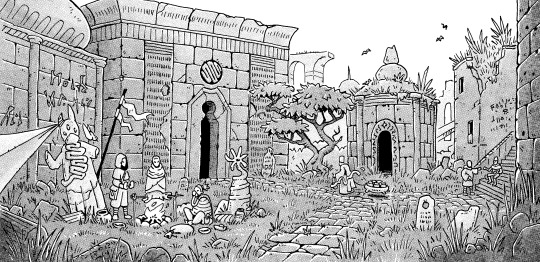
The Hollows
180 notes
·
View notes
Text
Ability Scores in 5e & Other RPGs
This little rant is inspired by a post by a blog named The Angry GM, titled "Your Ability Scores Suck" as well as a post titled "8 Abilities - 6, 3, or 4 Ability scores?" by DIY & dragons, because those two articles and my past few months of looking at various TTPRGs have led me to some insights into my own philosophy in how I like TTRPGs and how I feel about 5e's Ability Scores.
So let's look at how a couple of RPGs handle ability scores or their equivalents. Namely I'll look at D&D 5e, Pathfinder 2e, The Dark Eye (4th Edition Revised), CAIRN, and Pokémon. Yes, Pokémon is relevant to this. And it'll actually be the second game we'll discuss, but the first obviously has to be...
D&D 5th Edition
D&D famously has six ability scores: Strength, Dexterity, Constitution, Intelligence, Wisdom, and Charisma. In most situations the exact ability score no longer is that important, however, since from 3e onwards d20-based checks have become the near-universal input you play D&D with. This means that instead the ability score modifier is key, which ranges from -4 to +5 for most player characters.
Now while these six scores might seem pretty equal, players have quickly figured out that certain ability scores are more desirable than others, unless you play specific classes.
Dexterity, Constitution, and Wisdom are for example the three most common saving throws. 109 out of the 361 spells in the Player's Handbook force a saving throw using one of these three ability scores, while Strength, Intelligence, and Charisma only have 24 spells. Thankfully every D&D class gives proficiency with two saving throws, one of the three major ones, and one of the lesser ones (and certain subclasses as well as the monk get more saving throw proficiencies, but that's besides the point).
Additionally, when it comes to skills, and thus out-of-combat usefulness, Strength only has one skill tied to it by default (Athletics), while Constitution has none. Charisma has four skills to its name, Dexterity three, and both Intelligence and Wisdom have five.
Now the DIY & dragons article mentions that there are effectively three axes you have to cover with your ability scores: physical vs mental, force vs grace, and attack vs defense. That leads to eight abilities total. In 5e, using what we know about the game, we can make some great deductions.
For one, Strength is almost exclusively concerned with physical force attack, while Constitution nearly exclusively covers physical force defense. Dexterity meanwhile fully covers physical grace attack, as well as physical grace defense, since it affects AC and is used for Stealth, as well covering evasion-type saving throws. Dexterity is incredibly powerful in 5e, arguably the most powerful ability score.
On the mental stat side, the lines are less clear. All three ability scores can be used for offence, though Intelligence, being the casting ability score of only wizards and the generally utility-based artificers is the least offensive of the three. Still, its association with wizards means it probably is best associated with force, because fireball. Charisma easily can be sorted into grace and is mostly offensive, and Wisdom straddles the line between force and grace, but is also both clearly offensive and defensive.
As you can see, Intelligence & Wisdom & Charisma are rather ill-defined, a point also made by the The Angry GM article, but mechanically Wisdom is universally useful, while Charisma is either super important (because you're playing either a Charisma caster or a face-type non-caster, such as a rogue), or can easily be sidelined/dumped. In fact a lot of tables seem to disregard or minimize Charisma when it comes to roleplay, my tables have definitely done that. Mostly because you don't want to have players not participating in roleplay encounters because they don't have at least a +2 in Charisma and several skill proficiencies in that area.
Speaking of proficiencies, for skills the maximum you can add is +6 or +12 if you have expertise, while with saving throws the maximum proficiency bonus is +6, so with saving throws in particular, a +5 for a saving throw from that relevant abilty score is a massive defensive boon, though it's often less relevant for skill checks.
This knowledge, as well as the known issues with Intelligence-based skill checks often being seen as gate-keeping plot relevant information, leads to the realization that Strength, Intelligence, and Charisma are the three most frequent "dump stats", with the latter two in particular often having implications in out-of-combat situations, while Strength is a "safe" choice for full spellcasters.
Now let's think about how other games handle this... Let's begin, as I threatened in the beginning, with...
Pokémon
Pokémon famously uses six so-called base stats for its collectible creatures: HP, Attack, Defense, Special Attack, Special Defense, and Speed. Using the system described by DIY & dragons, Attack and Defense clearly map onto the physical, and Sp. Attack and Sp. Defense clearly onto the mental. There is no distinction made between grace and force. HP is a universally defensive stat, and Speed is both offensive and defensive.
Naturally, Pokémon doesn't involve dice rolls. These stats are used for formulas and comparisons. But you can already see that Pokémon, at least since Special got split into Sp. Attack and Sp. Defense starting in Gold & Silver, has a clear division of these stats, with it being clear what they do.
Now due to the mechanics and the goals of Pokémon, an individual character (read: the actual Pokémon) doesn't need to have balanced stats. Largely also because these stats only affect combat, the main mechanic of these games. Any out-of-combat activity present in Pokémon games in fact uses distinct stats, completely distinct from the base stats of the Pokémon. These can then be discarded/put into the background when that out-of-combat activity, such as Pokémon Contests, is removed from subsequent releases.
Now let's look at a D&D-related game that has a different approach to ability scores, because it provides a stepping stone to look at different RPGs...
Pathfinder 2nd Edition (Pre-2023 Revision)
Pathfinder, being a game spun out off the 3rd Edition of D&D, also uses the six ability scores that D&D uses: Strength, Dexterity, Constitution, Intelligence, Wisdom, and Charisma.
Just like with 5e, Pathfinder associates certain skills with certain ability scores, and just like 5e, Strength and Constitution are connected to only one and no skills respectively.
Still, that's just part of the bigger picture. Pathfinder 2e, just like D&D 3e, doesn't use ability scores as saving throws. Rather it uses three distinct saving throws that are tied to ability scores. Those saving throws are Fortitude (Constitution), Reflex (Dexterity), and Will (Wisdom). These are, for the keen-eyed, the same ability scores that are the primary saving throws in 5e. This means that defenses are covered exclusively by these three ability scores, and of these Constitution remains purely defensive, while Dexterity and Wisdom also have offensive capabilities. Still, the offensive power of Dexterity is lowered because in general it cannot be used to increase your weapon damage, contrary to how 5e does it.
It should also be noted that both when it comes to skills and saving throws, the calculations for rolls are very different than in 5e! If you are proficient with a skill or saving throw, you add both a bonus equal to your degree of proficiency (from +2 to +8), as well as your character's level, to the roll, in addition to your ability score modifier. This leads to massive bonuses, especially since magical effects can be added to that, too. Of course Pathfinder uses a sliding scale to determine difficulty classes and has a degrees of success system, but with that knowledge, the -4 to +5 you add to your rolls will matter less than 5e's ability score modifiers do. In general, as long as the modifier is at least a +1, it's fine.
This has actually led to Wisdom being considered a dump stat for many Pathfinder players, and that especially applies when playing with one alternate rule that I want to highlight.
In the Gamemastery Guide, the Alternative Scores variant rule splits Dexterity into Dexterity and Agility, merges Strength and Constitution, and makes Charisma rather than Wisdom the relevant ability for Will saving throws. That variant rule acknowledges the power of Dexterity and the relative weaknesses of Strength and Constitution, but somehow strengthens Charisma further. I don't have any numbers or insight on how popular this alternate rule is, but given what I know about Pathfinder 2e character optimizers, I wouldn't adopt the change to Will saves if I were to run this variant rule myself.
Still, the knowledge of these three saving throws puts us nicely into the realm of indie RPGs, which have really run with this. So let's look at one as an example.
Cairn
This lovely little game written by Yochai Gal has been a well-supported indie darling and is currently in a playtest for a 2nd edition.
Cairn uses three ability scores: Strength, Dexterity, and Willpower. It also uses a d20 roll under system, contrary to 5e and Pathfinder. This means that you aim to roll below your ability score, rather than adding a number to a d20 roll and seeing if you can meet the difficulty class threshold.
They are also, in combat, mostly defensive. Strength in combat mostly concerns surviving blows. Dexterity is used to determine if you move before the enemies and for escaping combat. Both Strength and Dexterity can be used for saving throws against certain spells. In combat Willpower is necessary to cast spells without suffering penalties.
Offensively none of the three ability scores are that important. They don't add to damage, they aren't important for making attacks, or anything of the sorts. Spellcasting outside of dangerous situations usually doesn't involve die rolls either.
This makes the three ability scores very balanced, but it also gives them comparatively little meaning. They are your protection from harm. Including out of combat. But Cairn doesn't know skill checks whose failure state isn't "nothing happens". If player characters have no pressure, they succeed. Especially if they have useful equipment for it.
Using the DIY & dragons blog post as reference, Strength only represents physical force defense, Dexterity only represents physical grace defense, and Willpower represents mental grace and force defense.
So, let's look at a different roll-under system, one that might provide additional inspiration for game designers...
The Dark Eye (4th Edition, revised)
The German TTRPG The Dark Eye (Das Schwarze Auge) is old, almost as old as D&D, and in its design its often as an antithesis for D&D. It's incredibly math-y, has a generally less heroic (but also categorically "good") playstyle, and is a class-less (kinda), level-less system. To ensure I know what I'm talking about, I'll focus on the 4th edition, which has by now been superceded by its own 5th edition, because that's the one edition of it I actually played.
DSA (its German acronym which I will use for brevity's sake) uses eight attribute (!) scores:
Courage, Cleverness, Intuition, Charisma, Dexterity, Agility, Constitution, and Strength.
Each of these eight attribute scores affects the character directly. Heroes have base values (melee attack, ranged attack, parry, initiative) that are calculated by adding together set combinations of attribute scores and dividing the sum, most often by 5, to determine those base values. For brevity's sake, let's look at two of these base values: attack and parry. Attack is calculated with Courage + Agility + Strength, while parry is calculated using Intuition + Dexterity + Strength. Both use two "physical" attributes and one "mental" attribute.
Similar rules also apply to calculating how much your character can withstand, be it through their general vitality (which is equivalent to hit points), their endurance (mostly used as a resource for athletic feats), and their wound limit, all of which can be used to defeat characters. Even the amount of astral points, the spellcasting resource, is calculated using your attribute scores. Every attribute is used at least once when calculating these eight values, with only Cleverness, Charisma, and Dexterity being used only for one of these eight fundamental character traits, with Charisma being the least important, because it is only used to calculate astral energy points, which are irrelevant for characters that don't know spells.
Furthermore skill checks in DSA are made by rolling three attribute checks in a row and then using skill points to modify the results if necessary. Skills use either three distinct attribute scores (e.g. Cooking, which requires Cleverness & Intuition & Dexterity), or two attribute scores (with one being used twice, e.g. Perception requires one Cleverness check and two Intuition checks). Simple attribute checks where you use only one attribute are rare, with heavy lifting often being the key example for it. There are also loads of skills in DSA, with the character sheet per default having twenty four skills, with more being common on most characters.
As you can hopefully see, all eight ability scores are used very often and impact your character greatly. They are furthermore more clearly delineated than the D&D standard, however they also don't map onto the DIY & dragons parameters for ability scores, despite having eight of them!
Conclusion
What can we learn from this? Well, honestly, draw your own conclusions. The six ability scores of D&D and Pathfinder are not the "be-all and end-all", that's for sure. You really need to think about what your game wants to do.
Is it just combat-focused? Then all ability scores should matter in combat and to (roughly) the same degree!
Does your game consist of multiple gameplay elements? If yes, then they should all be accessible and fun for players even if their base stats are "bad" in one aspect, while still allowing for specialization of player characters.
Generally, there is no "one size fits all" solution, and this rant hasn't even gone into ambiguity between different terms, the implications of specific terms and associated thresholds, or the exact history of ability scores in D&D before 3rd Edition!
Anyway, I hope this was legible, fun and informative.
#thehomelybrewster#rant tag#ttrpg design#dnd 5e#d&d 5e#dungeons and dragons#pathfinder 2e#The Dark Eye#The Electrum Archive#game design#rpg design#long post
24 notes
·
View notes
Text
The Electrum archive

View On WordPress
4 notes
·
View notes
Text

"...the beacon has been made, but the question is what to put it in: what would he make the most use of, what would he keep closeby-"
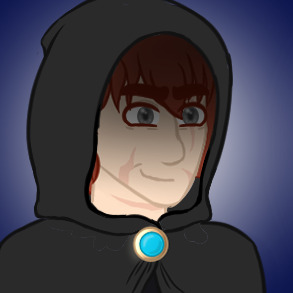
Suddenly struck with inspiration, the Fae went back to his forge, and began to pull out a dozen different materials... meteoric iron, fae-touched silver, alchemically purified gold and electrum, and dozens of rubies and shards of obsidian... as with a wave of his hand an Ash tree grew behind him, then seemed to collapse in on itself into a pre-sealed sword-handle scaled up to the size of his fellow Lord's hand.
"...if an Enchanted Sword was the cause of his current wounds, then I shall make him a blade far better than the one to harm him, that he might meet these assailants on his own terms- and use his enemies' own strengths against them. A blade to sever magic it comes in contact with, with Summoning Shard well protected in its Hilt... I will need to check my archive of blueprints and enchantments, but a name..."
He smiled to himself, eyes lost in thought for a moment, before he refocused on the moment.
"...Hańba- if these fools think themselves heroes for attacking a 'beast', then let their own Dishonor be their end."
The sounds of metal striking metal, bellows burning constantly, and other echoes of blacksmithing would echo through the halls for several more hours yet.
#ic#ic dash commentary#ic mini-drabble#xxlordalexanderxx#the emperor - fae court of the wanderer#halls of krakonos
6 notes
·
View notes
Text
Setting Up Your Cryptocurrency Wallet: A Step-by-Step Tutorial

In recent years, the cryptocurrency industry has experienced remarkable growth, with promising prospects for continued expansion. As enthusiasts speculate on the future of digital assets, seizing potential opportunities requires the essential first step of creating a cryptocurrency wallet. This comprehensive guide explains the intricacies of establishing a crypto wallet, emphasizing its importance, key features, and the criteria for selecting the right wallet to align with individual needs.
Creating a Software Crypto Wallet: Your Gateway to Trading
Step 1: Choose a Reliable Software Wallet App
Embarking on the journey to create a software crypto wallet begins with selecting a reputable wallet provider. A multitude of options exists, each offering unique features and security protocols. Thorough research is crucial before settling on a wallet. Some standout choices in the market include Exodus, Electrum, and Trust Wallet.
Step 2: Download the Wallet App
Once a suitable software crypto wallet is chosen, the next step is to download the application to your device. This ensures convenient access to your crypto assets. It is imperative to download the app from official sources, such as the app store or the wallet provider's website, to safeguard against potential security compromises.
Step 3: Create Your Account
Creating an account involves providing basic information such as your name, email address, and a robust password. Some wallet apps may require identity verification through a government-issued ID and a selfie.
Step 4: Transfer Your Assets
With your software crypto wallet and account in place, the subsequent step is to transfer assets. This can be achieved through various methods, including bank transfers, cryptocurrency exchanges, or transfers from other wallets. Wallet addresses and QR codes facilitate these transfers, allowing users to manage a diverse range of assets securely.
Creating a Hardware Wallet: Elevating Security Measures
Step 1: Select Your Hardware
Research and comparison are essential in choosing the hardware wallet that best suits your needs. Ledger Nano X, Trezor Model T, and KeepKey are popular choices, each offering distinct features and security levels.
Step 2: Purchase and Install Software
Upon selecting a hardware wallet, proceed to purchase it and install the required software. Most hardware wallets come with a setup wizard guiding users through the installation process. Connecting the hardware wallet to your device ensures a secure link, with instructions from the manufacturer serving as a crucial guide.
Step 3: Transfer Cryptocurrency
After successfully setting up your hardware wallet, transfer your cryptocurrency assets. This involves linking your hardware wallet to a brokerage account or exchange, ensuring that your digital assets are stored offline for enhanced security.
Creating a Paper Wallet: A Simple, Cost-Effective Storage Solution
Step 1: Utilize a Wallet Generator
To create a paper wallet, visit a reputable wallet generator website. This open-source software generates unique public and private keys for your cryptocurrency wallet. Save the generator as a web archive on your computer to enable offline use, minimizing the risk of online attacks.
Step 2: Go Offline for Maximum Security
For the utmost security, create your paper wallet offline to reduce the risk of online attacks and ensure the generation of the private key in an offline environment.
Step 3: Print and Secure Your Key
Print the private key on paper and store it securely, such as in a safe or lockbox. Safeguarding the paper wallet key is paramount, as it grants access to your cryptocurrency funds.
What You Need to Open a Crypto Wallet Account: Essential Considerations
Opening a cryptocurrency wallet account necessitates several considerations, including selecting a wallet provider, providing personal information, and possessing some cryptocurrency for storage.
Personal Information Required:
To comply with anti-money laundering (AML) and know-your-customer (KYC) regulations, you'll typically need to provide your full name, email address, phone number, and home address, and understand the importance of public and private keys.
Factors to Consider When Creating a Crypto Wallet: A Guide for Novice Investors
The process of creating a crypto wallet can be overwhelming for newcomers, but a few key factors can simplify the decision-making process.
Security:
Prioritize security features, such as two-factor authentication, multi-signature support, and robust backup and recovery options. A wallet with a solid reputation and a history of security is crucial.
Fees:
Consider wallet fees and opt for transparent pricing. Some wallets may charge additional fees for specific features or transactions.
Number of Supported Cryptocurrencies:
Ensure the selected wallet supports the range of cryptocurrencies you intend to hold. Check the wallet's website for a comprehensive list of supported currencies.
Customer Service:
Responsive customer support, user guides, and FAQs are valuable resources. Opt for a wallet provider that offers reliable assistance for any queries or issues.
Mastering the Crypto Wave: Navigating Profits and Pitfalls with Crypto Trading Courses
In the evolving landscape of cryptocurrency, acquiring a profound understanding of crypto trading is important for individuals seeking to capitalize on the burgeoning market. Crypto trading courses emerge as an indispensable resource offering enthusiasts the opportunity to learn crypto trading from seasoned professionals. As the crypto industry continues its remarkable growth, navigating the complexities of cryptocurrency trading becomes essential.
These courses not only equip individuals with the skills to decipher market trends and execute strategic trades but also provide insights into the top cryptocurrencies dominating the market. Learning from a cryptocurrency expert or a crypto advisor through structured courses empowers traders and investors to make informed decisions, enhancing their ability to navigate the volatile crypto landscape effectively.
These courses go beyond the basics of cryptocurrency learning, exploring advanced strategies and risk management techniques. Since understanding the nuances of the crypto market is important, crypto trading courses serve as beacons of knowledge, guiding enthusiasts through the intricacies of cryptocurrency trading, and fostering a community of informed investors ready to seize opportunities in this dynamic financial realm.
As individuals embark on their cryptocurrency journey, complementing the acquisition of a secure wallet with a solid foundation in crypto trading through courses ensures a holistic approach to navigating the exciting yet complex world of digital assets.
In conclusion, navigating the realm of cryptocurrency begins with the foundational step of setting up a secure and reliable wallet. Whether opting for a software, hardware, or paper wallet, the considerations and steps outlined in this tutorial provide a comprehensive guide for individuals venturing into the exciting world of digital assets.
For those seeking a deeper understanding of cryptocurrency trading and blockchain technology, Blockchain Council stands as a leading platform. Comprising subject experts and enthusiasts, Blockchain Council is dedicated to evangelizing blockchain research and development, use cases, products, and knowledge for a better world. Recognizing the transformative potential of blockchain, Blockchain Council offers authoritative crypto trading courses, providing invaluable insights into the intricate dynamics of the digital asset landscape.
0 notes